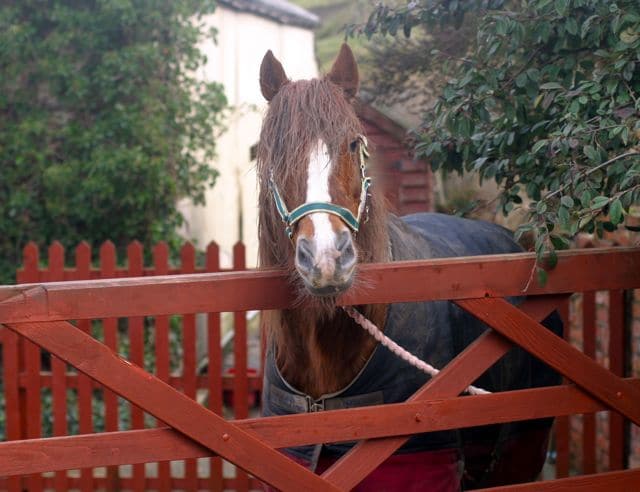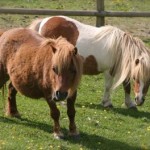Sanctuary Life
Horse & pony problems
As human lifestyles have changed so much over the last fifty years, so have those of our animals. We keep horses very differently now. In the past, we used horses to work for us, now we work to keep them. Whilst in many ways, there has been an improvement in horse care, in others the lifestyle of our horses has deteriorated. We make more demands on them, there is more emphasis on competing, jumping ever higher fences and being trained in all sorts of ways that puts a strain on them. No horse would ever choose to do any of these things – it is because of the desire of their human owners. Horses are not competitive – unlike humans. We are a species who like to be best and own the best, we like to win prizes for our efforts. A red rosette and a trophy means nothing to a horse!
Horses were often stabled next to the house and worked every day. If they were turned out it was into large pastures. Try and get planning for a stable at the bottom of the garden nowadays. We love old properties with their adjacent coach houses but it would probably be impossible to recreate that horse lover’s dream home! It’s usual for horses to be kept at livery while their owners work to pay for their keep. If the paddocks aren’t big enough, health problems and boredom can set in. A horse needs steady exercise to keep his bones strong and healthy. Too much strenuous work when he isn’t fit will cause him to go lame.
A recent National Equine Health Survey has revealed that lameness is the most common problem for owners with 11% of horses affected. Many of our rescued horses are brought in because they are lame, when they can’t be ridden, owners don’t want them. Laminitis (or fever in the feet) is the next problem with 3% of the horses in the survey suffering this painful condition. Laminitis can be prevented by good management, it develops when a horse or pony gets too fat. Weight issues are another problem, with 9% of horses being recorded as overweight and 8% being underweight. Skin disease affects 5% of horses – is pollution and use of chemicals to blame? Wounds affect 4% and colic 2%. The latter is especially serious in a horse and only prompt veterinary intervention will save him. So are our horses doing better than in the old days? Whilst we have a lot more technical knowledge and information now, there was a lot of experience and know-how in the past that is still relevant to the way we care for our equine friends today.
We have taken in three more horses recently and they have a permanent home with us for life. You can buy a bale of hay for any of our ponies from our online shop – it helps us to feed them and makes a big difference. They also love apples and carrots. Thank you. [donate]



